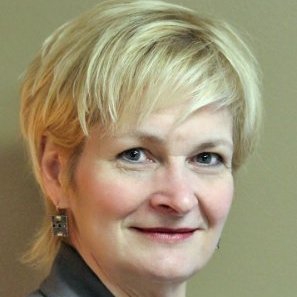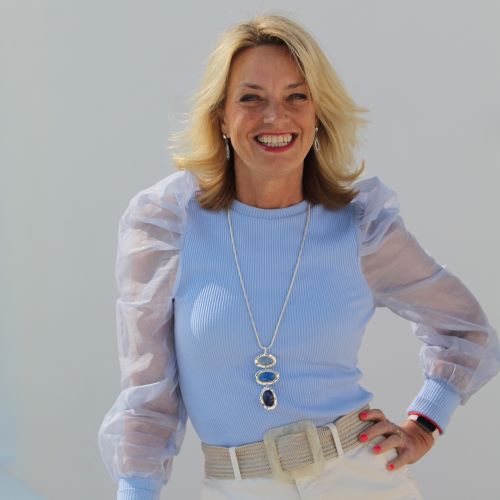Lisa Burns
Episode 42: The Importance of Mentorship, with Lisa Burns
In this episode, you will learn about using creativity to solve difficult challenges from Lisa Burns.
Lisa Burns has been in the travel industry for over 35 years with a wide range of experience including group tour planning and product development, event and meeting planning, marketing and public relations, and both a domestic and international tour director. With a proven track record of diligence and reliability, Lisa is goal-oriented, a natural and articulate communicator focused on the nuance and value of detail management and always a willing, eager and motivated champion of the task of the moment. She is able to juggle multiple projects and thrives in a fast-paced environment. With a passion for the tourism industry, destination marketing and being the consummate hostess, Lisa is a passionate advocate for the product she represents and is always willing to put in the time and energy needed to reach a goal.
More on Lisa’s Background
I am so excited to talk to you today, Lisa, thank you for joining me.
Thank you, Nicole.
I love your background. I’ve known you for a number of years and it really does describe you really well with your passion. You’re a great communicator, so I know that our conversation today is going to be a very interesting one with this whole concept of you being the consummate hostess, which I would agree with as well. For our listeners’ sake, we’d really like to hear in your own words your journey and how you got to where you are. Can you give us a little more about your story?
I would love to, you know, but it’s funny because I just recently had somebody say to me, “You love to put on a party don’t you, Lisa?” And I went, “As a matter of fact, I do.” If there’s a party to be put on, I’m there. I will rise to the occasion.
That’s awesome. You’re a good friend to keep around, too. For sure.
Well you know I had a mother and relatives that loved to put on a party, so it just comes naturally to me I suppose, but you know, it’s interesting because when I was in college, which was back a long time ago, I was a philosophy major. I can remember my mother being so worried about it. She said, “What are you going to do as a philosophy major? There’s really not going to be anything for you to do.” I started thinking about it, and I started thinking about how I had wanderlust and I wanted to travel. That’s how it started. I took this travel course to become a travel agent. I got the bug then. I thought to myself, “This is what I’m going to do.” Plus, they introduced the concept of FAM trips. They said, “You can travel for free,” and I was like, “Where do I sign up? I want to travel for free.” That’s how it started. I started there with American Airlines. The agency that I was affiliated with was affiliated with American Airlines, so I went to work for American Airlines and became a travel agent after that. Then, that’s when I moved actually to the greater Rochester area and I took a position at Empire Trailways. Alexander Tour and Travel.
What’s really interesting about all of this is I look at that as the time where very motivated mentors came into my life. Women, actually, that really motivated me. The woman that owned that company for many years was a woman by the name of Christian Park. I just went in there as an agent to start and she was very kind to me. I think she probably recognized my innate ability and she offered me a job that had never been held by a woman before. There was a lot of pushback. There was a great deal of pushback. That was the motor coach industry at that time, which was primarily 95% men, so there was a lot of pushback in the job she gave me, but I’ll never forget it and I’ll always be deeply grateful to her because she set me on that path. That was the path of the group tour industry.
Then from there, I went to another really wonderful mentor who’s still a great, great friend today. Sharon Koning owns a tour company in Rochester called Koning Day Tours. She does domestic and international group travel. She’s also, a person that mentored me and helped me understand destination marketing. Putting together product, putting together itineraries, making those itineraries really sing to people, make them want to travel, and that’s where I started beginning to hone my skills, too, in terms of knowing what would entertain people. Sharon is really motivated by entertaining her travelers and educating her travelers, too. It’s one thing to say you’re going to go to someplace just because it’s fun, it’s another thing entirely to get them to someplace and educate them. Make them learn something. There again, I had another excellent mentor on my path, you know?
Yeah, that’s really interesting. I love how you’re bringing this whole idea of mentorship into this conversation because it is those people that we cross paths with along the way that really do help guide us, and sometimes even change our trajectory of our career. I think that’s really interesting, and what an interesting time for you to get into the industry when it was so dominated by men, and to be with some of these leading women, basically, that were breaking through, right?
Very true. It was at a time of my life, too, where I really was receptive to that. It worked to my advantage. Now, as we all do get older, and hopefully full of a little bit more wisdom, I really appreciate the wisdom of these women who understood that they wanted to capture motivation and work with it and recognize it. I believe that it is my responsibility now as well, and I know it’s yours, too, because I see the bright women that you hire in your business and I know that you see that as well. We have a responsibility to pass that on, just like these women passed it on to me. So, I am very thankful for that. The mentors that have come, and still do come in my life because from Day Tours I went to manage a very large motor coach company and a tour company and developed my own programming. When that ran its course, I ended up at a Chamber of Commerce on the other side of the table, as I like to say, from being the buyer of destinations to actually being the seller of destinations.
And there, I had a mentor younger than I, that was still very, very instrumental in guiding me and also recognizing that I did well when I was given autonomy. She recognized my skill and she said, “Go after it. I have faith in you, go after what you’re doing.” And that also reaffirmed for as well, I think. I know good leaders are the type of people that recommend or understand. Recognize capability and move you along. Set you free.
You know, I think that’s so interesting because you mentioned that mentor at the chamber was younger than you. It’s that whole idea of mentoring up and down, right? We do learn from the people that we engage with. Whether it’s professionally or personally. I also appreciate what you’re saying about almost paying it forward. Feeling that responsibility now to mentor others. For me, personally, there was like this period of time where I was like, “Wow, I actually almost graduated to the other side.” Although I continue to be mentored by many, and I have a lot of my own mentors as well. There’s kind of this a-ha moment that happened for me where I thought, “Wow, I really have an opportunity to help and guide others,” and what an awesome feeling that is.
I agree. In this industry that we’re in, this travel and tourism industry, the umbrella to me is all hospitality. This whole industry has a beautiful, rich, deep history. It’s an economic generator in our communities, in our state, in our nation, right? I think it’s even become more so understood by so many what an economic generator it is, and I think that the value in that, the motivation in that comes from the people that are in the industry and know how to create the product and move it forward. We do, I feel we have a responsibility to take what we’ve learned as much as we are learning, too. I will tell you, Nicole, I’m much older than you, I will readily admit it, but when I was in college, a fax machine was introduced to us and it blew our minds. Now we’re dealing with all of the social media world. We’re learning from people, and we do understand, that that is where we have to be.
Conversely, though, I think that we have a lot to give as well. I think we have, I believe anyway, we have a different sort of a work ethic and I would love to impart some of that on generations. I’m not just lumping a generation in with a different kind of a work ethic, I know many, many young people have amazing work ethics. There is a certain amount of diligence that you have to pay to this kind of work, and you know this kind of work is not a 9-5 kind of job. It’s the kind of work that takes nights and weekends. When people are on vacation, we’re there. That’s our job. It takes commitment to do it. I love it when I see so many people coming up in the industry that understand that and then appreciate it when we’re out entertaining any number of people for any number of reasons in my current position here at Letchworth State Park in the Genesee Parks region.
I’m entertaining travel writers and bloggers, and many people like that. We’re sitting at a beautiful restaurant, the Glen Iris Inn in Letchworth State Park, I’m sitting there. I’m at work. I never forget that for one minute, that I’m actually in this industry working and sitting in this beautiful restaurant, or taking people through this beautiful park. It’s a beautiful industry to be in, and that’s why I love to be able to capture, and I know you do, too, when you capture someone’s interest.
Absolutely. This is a great start to our conversation and I love how things just kind of weave their way through these conversations, but this whole idea of entertaining and throwing a party, I think we started with that and then we just ended with that. I think that’s just great. When you were talking about even the itinerary development and the work that you did for the group market when you were a buyer of destinations and you said you want to know what will entertain people. You were looking for things that will entertain people, and then to your current position now at Letchworth where you are entertaining travel journalists, bloggers, and others showing off the beautiful asset that is Letchworth State Park. I think that’s really awesome.
A Creative Way to do Visitor’s Guides
Lisa, on our podcast, we like to focus on two areas. One is creativity and the other is collaboration. Sometimes we find it’s hard to talk about one without talking about the other, so we’ll dive into some questions around the topic of creativity. But, I wouldn’t be surprised if we end up talking about some collaborations along the way as we’re diving into that because I find that they really do go hand-in-hand. You know, you can speak from any of your experiences. With Letchworth State Park, I think you bring a lot of good insight, but I know you have insight into many of your different experiences. The tourism and hospitality industry is so competitive. What are some of the things that you have done to stand out from the crowd in any of the scenarios from your past experience?
Well, I don’t know that I ever really have stood out from the crowd. I think that you always have to task yourself with being as creative as possible, looking at what’s out there, and developing a niche in that. You have to know what’s out there, and then develop your own little tweaking to something that’s already there. There are proven things, and so you just have to be a little bit more creative. I was thinking about that, knowing that you were probably going to ask that question, and one of the things I did for a while when I was a seller of a destination, representing a destination which, in my case, was Livingston County in the Finger Lakes. We always produce a visitor’s guide, a way for people to actually see your attraction and distribute that. I also began to realize how our imagery was so important in that guide.
Then, I also began to realize how that imagery was actually art. When I put out requests from our photographers to bring me back photography so I could use it in the visitor’s guide, I was often blown away by the quality of their photography. These were beautiful artistic images. I had this idea, and you’re absolutely right, Nicole, it goes to collaboration. I had this idea that I wanted to showcase the photographer’s artwork. I collaborated with our arts council in the county to have an opening. An actual art show, which is where I featured the art of the photo as a framed photo and then put it against that photo as the visitor’s guide. We did that for about four years and we had a great deal of success with that.
Not only did we engage the photographers, of course, but we engaged our immediate audience in the value of understanding the beauty of where they lived so that they can, in turn, help sell the product, which was our community as a destination for tourists. I was really happy with that project. I thought it was creative just in terms of the art aspect of our publication and then collaborating with our arts council. And then I took some pride in the fact that I know of at least two other tourism offices that took that idea, tweaked it a little bit, but unveiled their visitor’s guide in a similar fashion.
That’s great. You know it’s a good idea when people start to copy you, right? That’s the best compliment. That’s the best compliment you can get. I agree with you. That was a completely creative, out-of-the-box way to think about a travel guide, which seems to be one of those regular kinds of things that are in a destinations toolbox if you will when it comes to marketing, right? Everybody has a travel guide and how can we differentiate our travel guide. But then, I also love that you took it one step further and involved your own community and used it as a way to create those community ambassadors. We need those cheerleaders in the local community, right?
Absolutely. Absolutely. When the visitor comes into a community, obviously, the last thing you want them to say to somebody, if asked, “Oh, there’s nothing to do around here.” That’s part of the educational process, too, but you know it’s interesting. I’ve got to tell you a funny thing that just recently happened. I personally believe that print is not dead, nor do I ever believe it will be. I think people like something tangible to look at. They may research a great deal, whether it be online or in print, a destination, but I have a unique experience of being here in Letchworth State Park and we just introduced a program where a company comes in and puts a rack of tourism-related brochures. I just brought this company in here to Letchworth State Park. The first rack of tourism brochures came in last week, and within three days here at Letchworth State Park that rack was almost totally annihilated of material.
Wow.
A true story. After three days I came in and looked at it and went, “What happened?” Everything was gone. Almost everything was gone. It was a testimony to the fact we get hundreds of visitors in our main visitor center, and it’s a testimony to their walking by this printed material and having it called to them, and having them pick it up for a variety of reasons. The distribution company said, “I wondered about three aisles of Thousand Islands Publications.” I thought, “Aren’t you giving the Thousand Islands just a little bit too much coverage?” She said to me, “Campers love the Thousand Islands. They’re here camping in Letchworth State Park, but I assure you, they will pick it up.” And within three days, it was all gone.
She was right. I’ve got to give a shout out in my own way to printed material. I know so much of what happens as research has happened online. That’s a given. We all know that. We have to be there. We want to be there. That’s where information is gained. But here, at Letchworth State Park, one small little piece of the pie, I can tell you that print is not dead. Well actually, quite honestly, it doesn’t hurt that internet connection is so poor in the park.
That might make a difference. I’ll agree with you though on the print that it’s not dead. I’ll also agree that it’s probably not going to die. I think you touched on a little bit when you were talking about your photography as an art project. It needs to change. I think folks aren’t looking necessarily for the hundred page directory listing every single possible thing to do. They’re looking for something that’s more storytelling or more photography, or more interesting and useful to what they need. I also think that your example is a good example that a lot of times that the print is being used in the market. They’re staying at your campground in Letchworth State Park and they want to know what’s nearby, or they might be thinking about their next camping trip and picking up that Thousand Islands piece.
Right. I agree, Nicole, there’s an old song. A Rod Stewart song, “Every Picture Tells a Story,” I believe that. I believe that the image is very alluring to people, so the image always has to be something that evokes an emotion of some sort and then that draws people in. Then the information is either storytelling, everybody loves the story. Not an epistle of a story, but certainly a highlighted story that gives people information and then the resource they need to cause them to want to move further into that picture. I agree.
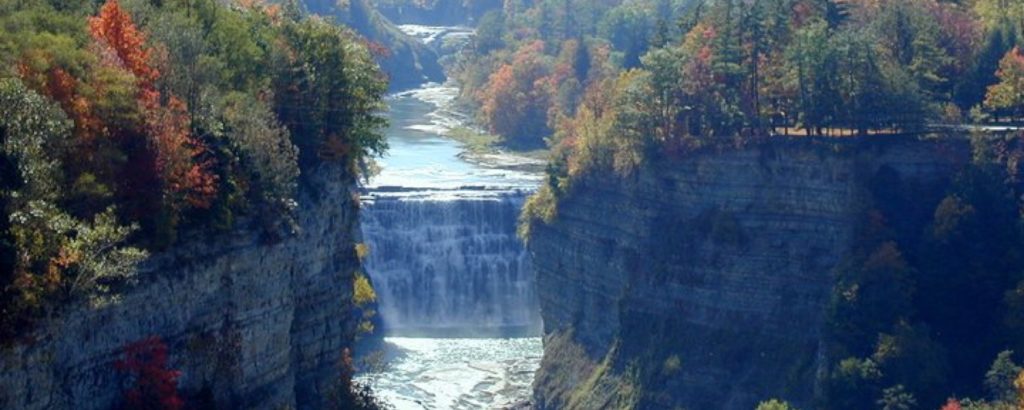
[bctt tweet=”“Every picture tells a story. Your images have to evoke an emotion.” – Lisa Burns #Podcast”]
Think Outside the Box
Absolutely. While still on this topic of creativity, but switching gears just a little bit, I believe that we learn a lot from challenges, or from moving through something that might not look like you’re able to move through it. I’m wondering if you can share a challenge that you may have faced in your professional career in terms of moving a project forward or something that you were working on and maybe a creative solution that came from that challenge. I find that we learn so much in those kinds of scenarios.
Right. It’s very true. I know that in my world, certainly in destination promotion, there’s always a money issue. It’s always a money game. Is there enough money to do what you need to do? That causes you to be more creative, too. It causes you to look at things differently and be more creative about the way you spend your money. There are always going to be naysayers. You come to somebody with an idea and there is probably going to be people that say that’s been done before, it won’t work. Or, well, we’ve never done that before, it’s not broken why try to fix it? That happens. It’s tough to hear it. I’ll be the first one to raise my hand and say, “I do not like the word ‘No’.” I don’t like to be told, “No.” But, it’s a motivator, you know? And, although there have been many times that I’ve been told no in certain circumstances.
I can remember. I wonder if Sharon is probably going to listen to this. I’ll have her listen to it. I can remember years ago going to her and saying, “I think you should do a tour at Thanksgiving time,” because I had spent many years on Cape Cod and around Plymouth, Massachusetts and that’s America’s hometown. Plymouth does up the Thanksgiving celebration really well with Plymouth Rock being there and the Mayflower and these big hotels that do lavish Thanksgiving dinners. And I said, “I think that that would be a beautiful three or four-day tour.” I remember her saying to me, “No one wants to go away from home at Thanksgiving, Lisa.” And I thought to myself, “No, I don’t think so. I think people would like to go away, particularly people who may not have a big family to spend Thanksgiving with.” She started doing those tours, and it’s years later and she’s never missed a tour for Thanksgiving. It doesn’t always go to Plymouth. She finds all sorts of wonderful places to take people, but she’s always, always been doing a tour at Thanksgiving time.
That’s great.
I know. I love that and I think that that’s part of it. Especially in that business, you really do have to think outside of the box and wonder where people will want to go. It never surprises you. It never surprises you. We could put something together that we thought the world was going to love this trip and then it’ll sit dormant. Whereas, we’ll put together a tour saying, “Well, this is the goofiest little tour.” And then that will sell out. And then you’ll have to put another one on because it’s sold out. It turns around all the time. That little bit of diversity, that hearing the “No” for us should never be the end of the story.
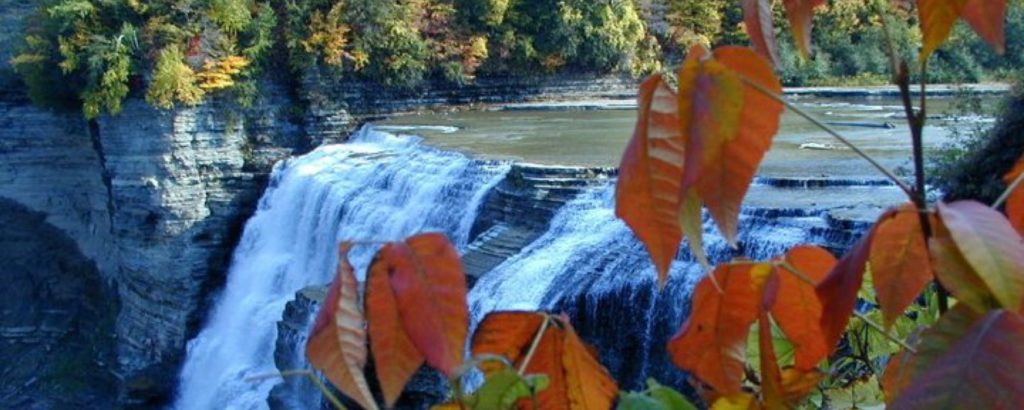
[bctt tweet=”“Think outside the box about where people will want to go.” – Lisa Burns #Podcast”]
That’s terrific advice. Absolutely.
Upcoming Projects for Letchworth State Park
Looking to the future. Is there a project that you are working on right now that you’re really excited about that you’d like to share?
Oh, thank you for asking me that. Of course there is. Here at Letchworth State Park, I’m blessed and fortunate to be here. I’ve promoted this park and this region for so very, very long and when this opportunity came to me, to do it specifically about this region, specifically about this park, the number one state park in the nation, it was a no-brainer to take it on. We also realize that we have a lot of responsibility to almost three-quarters of a million people that enter this park annually. We have a responsibility to them, so what we are doing, I’m very excited about this. For the first time, we’re actually going to produce our official Letchworth State Park map guide. It really is something that’s well overdue that will be handed out at all four of the gates when people enter the park. It will not be distributed outside of the park.
We have two tourism offices with two counties that really service this park well. Livingston County and Wyoming County. They produce, as we mentioned before, a visitor’s guide, and they’re out there distributing all over. They are, in large part, the reason why so many people come to this park. They do a really excellent job with helping us promote Letchworth State Park, the Grand Canyon of the East, but we want to produce something that we’re doing inside the park that is going to be a resource for the visitor. We want to enhance our hiking trails on this map.
We want to enhance where people can see birds better and where their photo opportunity is better. We have a nature program, a hike and lecture program that I really don’t think is known all that well with the visitors who come in. Any day of the week and season somebody can go on to an established hike with a naturalist in this park. Whether it be a hike to see wildflowers, a hike down to the lower falls, a hike around all the state footings and old trees in the park. It goes on and on and on. We also have a lecture series where people can sit and actually hear somebody talking about any number of things either related to the park or related to the region, related to Seneca history, related to either Mr. Letchworth, William Pryor Letchworth is in the incredible gift he gave us, or Mary Jemison, a white women of the Genesee. There’s a lot to tell.
We have our new Humphrey Nature Center. It’s a state-of-the-art nature center. It is a fabulous, fabulous resource for not only for the park but for the region. In fact, there is a naturalist there, his name is Elijah Kruger and he developed the Young Naturalist Program where he’s bringing in children. It’s a guidebook and they can do little projects along the way in the park with their parent’s help and then a certificate, an award for filling out the booklet. There’s so much that’s going on at this park and we want our visitors to be aware of it, so we’re creating this map. It’s going to be very similar to a traditional road map, but it’s going to be very detailed so that the visitor can have a resource in front of them as to exactly how to enjoy the park. I’m very excited about it. I know it’s going to be well received and I think it’s going to be something that’s long overdue in the park.
We’re also contemplating the idea of actually providing guided tours for people that actually in the park. Maybe something in terms of a shuttle service that will do an hour and a half tour of the high points of the park. We have a lot of campers that come in in those big RV’s or those big campers and it takes a lot for them, too. Either they don’t have a car to go touring around, or it takes a great deal to unhook the car and all of that, so we want to offer a resource to our visitors in that regard. Those are two projects I’m really excited to work on. They’re new and different for the park.
Those are awesome. For our listener’s sake, you talked a lot about what’s in Letchworth State Park, but how big is the park itself?
The park is well over 14,000 acres and it’s a long, linear park from the north end to the south end there are 17 miles. The Genesee River runs through the middle. Genesee River runs north from Pennsylvania all the way up to the City of Rochester. At the lower part of it, it just cuts this amazing swath through this gorge and it’s spectacular. Nobody, if any of your listeners haven’t been here, I encourage them to come because it is just such a gem of natural beauty here in New York State. There is, as I said, so much to do in the park. If you’re a nature lover, of course, come, but even if you’re not then just being here communing with nature is pretty remarkable. There’s a hot air balloon company, there’s a whitewater rafting company that services the park. Our rapids are two’s and three’s. They aren’t like you’ll find in the actual Grand Canyon and the rivers out west, but they are certainly fun and offer a whole different dynamic to being in the park.
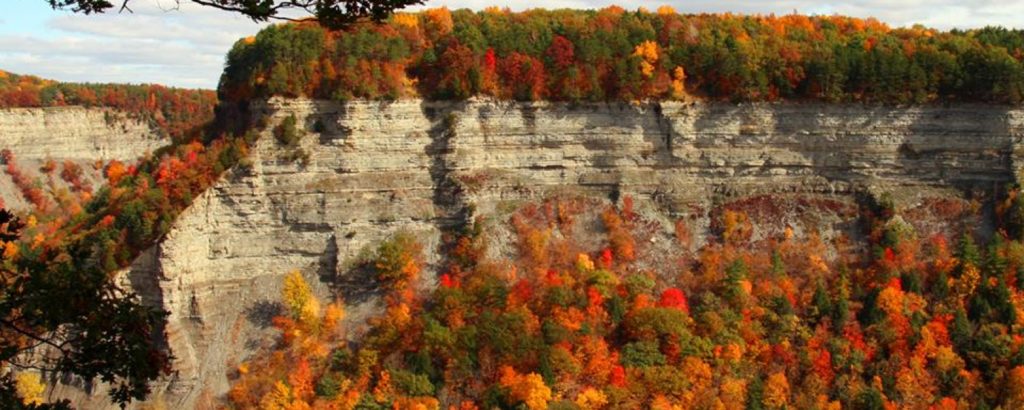
[bctt tweet=”“Letchworth State Park is such a natural beauty here in New York State.” – Lisa Burns #Podcast”]
That’s really great and that just really helps illustrate why your guide and map is so important. I think that’s a really terrific idea because there is so much going on. It’s such a large park. There are so many things to choose from and anything you can do to help the visitor, that helps them with their experience, right? It’s definitely going to improve the visitor experience.
Exactly. Sure, and this park is steeped in history, too. The rich history of William Pryor Letchworth and what he did. What he gave his spouse. His private 1,000 acres he gave to the State of New York because he wanted it forever preserved. I know that that was insightful. He was a very philanthropic man and he knew what he was doing. He had seen some devastation in the area from logging before he bought the land, the first few acres that he bought. He built upon that understanding that he wanted it to be a natural wonder for everybody to enjoy. He created an arboretum. He planted all sorts of trees and although he did not know what would exactly happen to Niagara Falls, I think he probably had a vision that he did not want this area to become so commercial.
Niagara Falls is obviously one of the seven wonders of the world and obviously amazing, but what’s grown up around it is nothing like what will ever happen in Letchworth State Park. I think we have this man to credit for this. The Seneca Indian had a name for him, which called him, “The man who always did the right thing.” They called him, “The man who always did the right thing.” I think that that serves him well, so we have that rich history. We also have the history of the Seneca Indians. The Seneca natives, Keeper of the Western Door, and the history of Mary Jemison, the white woman of the Genesee. That’s an amazing story. We want people to know more about that. So, we do have a rich history here in this park.
That’s great. That’s really awesome. Well, very exciting. I look forward to seeing that when it comes out.
How to be a Great Partner
Lisa, I would also like to talk about collaboration. We have talked a little bit about it already, but the thing that I love to focus on is this whole idea of what I like to call, “Coopetition,” which is where competitors perceived or true competitors come together and cooperate to build programs and projects that are bigger than what they can do on their own. I’m wondering if you can describe a time when a collaboration between competitors worked for you, that our listeners can learn from.
You know, it’s true, and competitor’s used in the nicest possible way, right? Because, in destination marketing, you need your friends. The reality is our world is often separated by the boundaries we need to identify based on the work we do. Oftentimes you represent a county or an area, but the reality has always been that the visitor just doesn’t helicopter into your area and helicopter out. They’re coming from all directions, so you need that collaboration. In this world we often want people to stay in our hotels because that’s where their resources will be best spent, or are spent in your community, but you have to realize that a visitor is going to travel to where the visitor’s interest lays or lies.
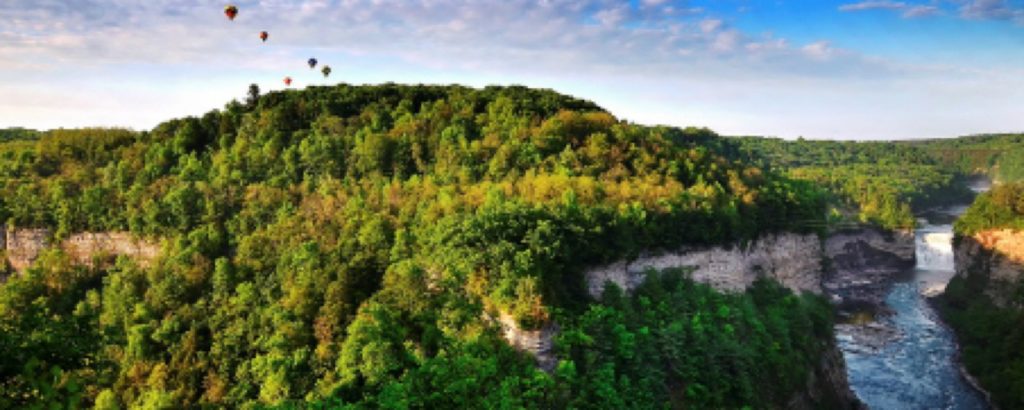
[bctt tweet=”“Visitors don’t helicopter in and helicopter out.” – Lisa Burns #WhyCollaborate #Podcast”]
You have to collaborate. There is a bit of competition to want the visitor to be in your area, but nevertheless, you have to collaborate. I had many, many years of great collaborations, Nicole. Those things that you can’t necessarily do on your own, but speak to the traveling public and offer them an option. A multi-county option, if you will, or in a region. I can think of a few. We did a great project years ago called Routes 5 and 20 Project. Routes 5 and 20 is an original native toe path. It spreads throughout four or five counties in just one particular area. All of those county representatives came together to create years of programming on how best to run this route. It started after 9/11 when people weren’t traveling to give them an option, a more leisurely way to travel, to build more travel-conscientiousness and it worked very, very well for many, many years. That was a great collaboration. I was involved when another collaboration, which took the food of the greater Finger Lakes and paired it in a cooking competition at the New York Wine and Culinary Center in Canandaigua. It was called Sliced, Dice, and Spice. You remember that, right?
I do remember that and actually I had Valerie Knoblauch on a previous episode on our podcast and she spoke about that.
Yeah.
A fabulous and creative way to bring many, many folks together and really showcase the food from the area.
Yeah. That was a great program, it was. That went for a couple of years as well and we engaged the chefs in our communities to become more creative in the way that they were preparing food and I felt even educated them quite a bit more on sourcing local and not just waiting for the vendor truck to pull up. To actually go out and find your partners where you would get the best food. There is a restaurant in this community where the chef who in the first year was the runner-up. I actually thought he should have won, but he was the runner-up. He has his own bees. He has his own herb garden. He sources local all the time. He’s a big proponent of that. I think he began to understand that and learn that through Slice, Dice and Spice.
I would definitely agree, and I think that that’s a really good example, again, just like your photography example where you take a tourism initiative that might be directed towards the visitor but it also has this really nice side benefit in the community where you are because it does serve as education. It does bring a focus on, in this case, back to the local food and how important that is.
Right, and the diversity of the way the tourism industry works is, it never ceases to amaze me, the creativity. I want to mention the Haunted History Trail of New York. That is a great collaborative effort, and an amazing program when you think about the niche of that. People like to travel just to go to haunted places. Who would have thought that, right? But it is a big program. It started with about a handful of attractions that wanted to promote for whatever it was that they do that’s haunted related. Now it’s turned into, I think, well over 60 attractions in all of New York State that are promoting it. Hugely successful. In fact, I mentioned a minute ago about this brochure rack that we have here at Letchworth State Park, a brochure for Haunted History Trail is on that rack and it was the first one to leave that rack. Isn’t that something?
Yep, that is.
It just speaks to people.
It does and you know, niche programs like the Haunted History Trail or even the Routes 5 and 20 Project, even thought that’s maybe not niche to a specific travel market, but it’s niche to a specific type of experience. That whole leisurely drive, right?
Right.
And kind of like makes you think of Route 66, which is on a lot of people’s bucket list, right?
Yes, exactly.
I think that’s really fabulous. I knew that you would have a lot of good examples, and I know that you’ve had a lot of really great partnerships. What I’d like to do is share with listeners what makes a great partner. So that if someone who’s listening is thinking about looking for a collaboration or entering into a partnership on a program, what types of things should they be thinking about and looking for to find a great partner?
Willingness. Willingness to listen to new ideas. Willingness to task your own mind to open to possibilities, and to be a worker at it. I raised my daughter, I said, “We’re workers, right?” She throws that in my face now that she’s an adult, but I really believe that. I think you’ve got to work for everything that you’re doing and a great collaborator is willing to think with you and to think creatively and then is also willing to do the work. That’s very, very important. A collaboration can often be a great deal of work. There’s time, there’s effort. There is a great deal of planning involved if you’re going to make a product that is going to speak the way you want it to speak to the traveling public. So, there’s work involved. I think it’s as simple as that. It’s the willingness to work together and to work towards the common end. I can’t think of anything more creative than that when it comes to collaboration, Nicole.
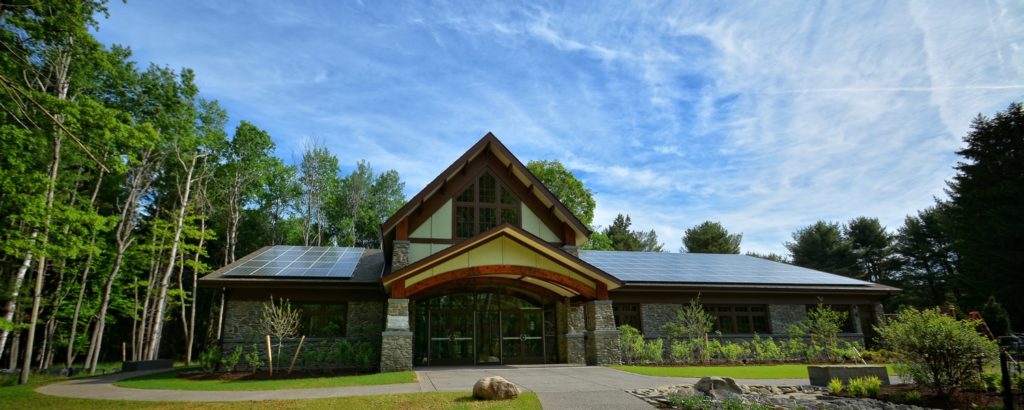
[bctt tweet=”“A willingness to listen to new ideas makes for a great partner.” – Lisa Burns #WhyCollaborate #Podcast”]
I think that that’s a really great point is that whole idea of being willing. I think that’s a perfect word. Willingness or willing to listen to new ideas, to be open to new ideas, to participate in planning and to actually do the work. I think that’s great advice. Absolutely.
And it’s true. It’s true. Something like that absolutely has to happen. Then the sky’s the limit. When everybody is on the same page and working towards a common goal, then the sky’s the limit. The collaborations I’ve worked on, I’ve been fortunate enough to work on, had those components. Had the willingness, the creativity, and the work ethic to drive the product home. I’ve been thankful. Grateful for that.
That’s fabulous. Well, Lisa, I knew this would be a great conversation. You have shared so many really wonderful insights. I loved how our conversation started with the mentorship, and I think that you really have provided mentorship to our listeners today. Before we sign off, are there any final words of wisdom or anything that you’d like to share that we haven’t gotten to that you had hoped we would?
Well, you know what, I’ve identified myself as a seeker over time. I just encourage people to seek out new destinations. Seek out travel, and continue to travel because it’s our right, isn’t it?
It absolutely is.
Don’t be dissuaded, just keep on traveling.
I agree. We will put a link to the Letchworth State Park website in your show notes so our listeners can go there and dream, and hopefully be inspired to go and see it for themselves.
Thank you.
I really thank you for taking time out of your day today to share with us and I’ll look forward to speaking with you again.
It’s been my pleasure. Thanks, Nicole.
Ways to contact Lisa:
- Website: parks.ny.gov/parks/79/details.aspx
We value your thoughts and feedback and would love to hear from you. Leave us a review on your favorite streaming platform to let us know what you want to hear more of. Here is a quick tutorial on how to leave us a rating and review on iTunes!
